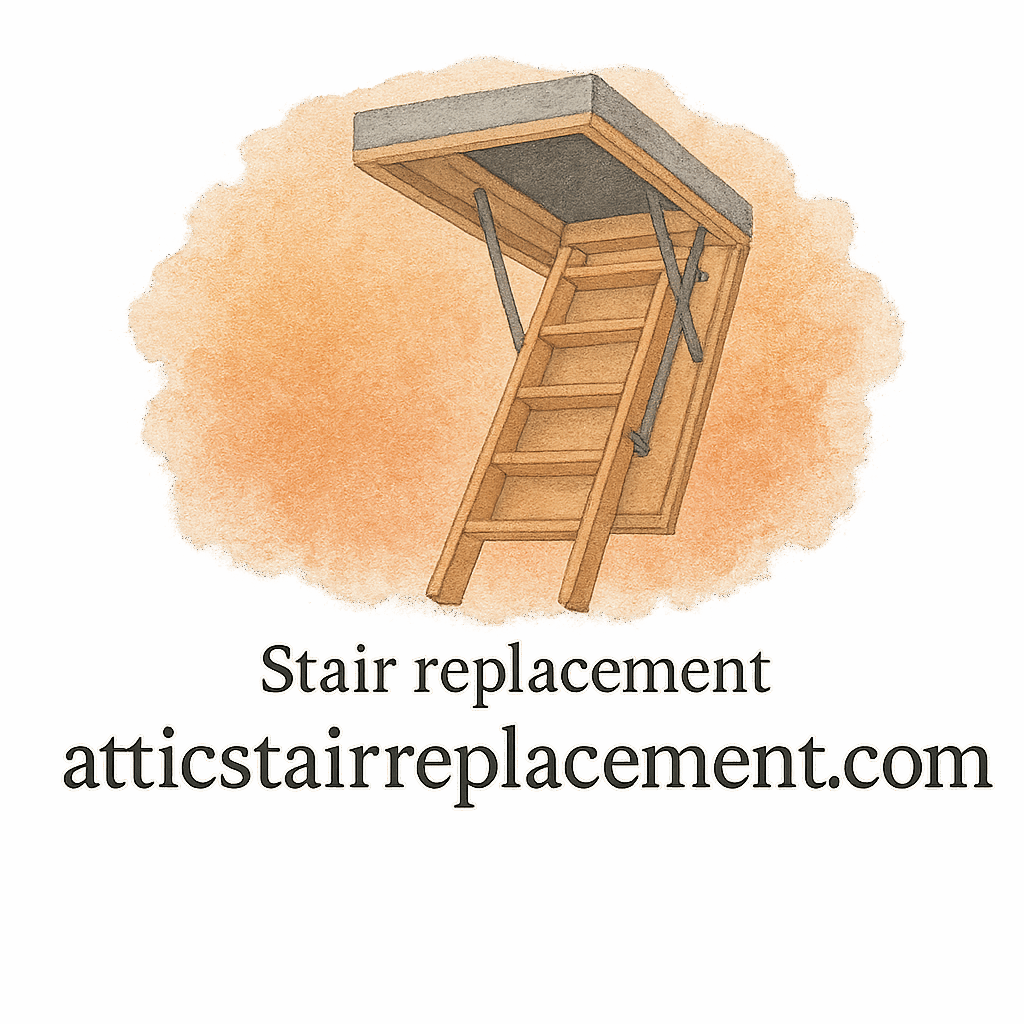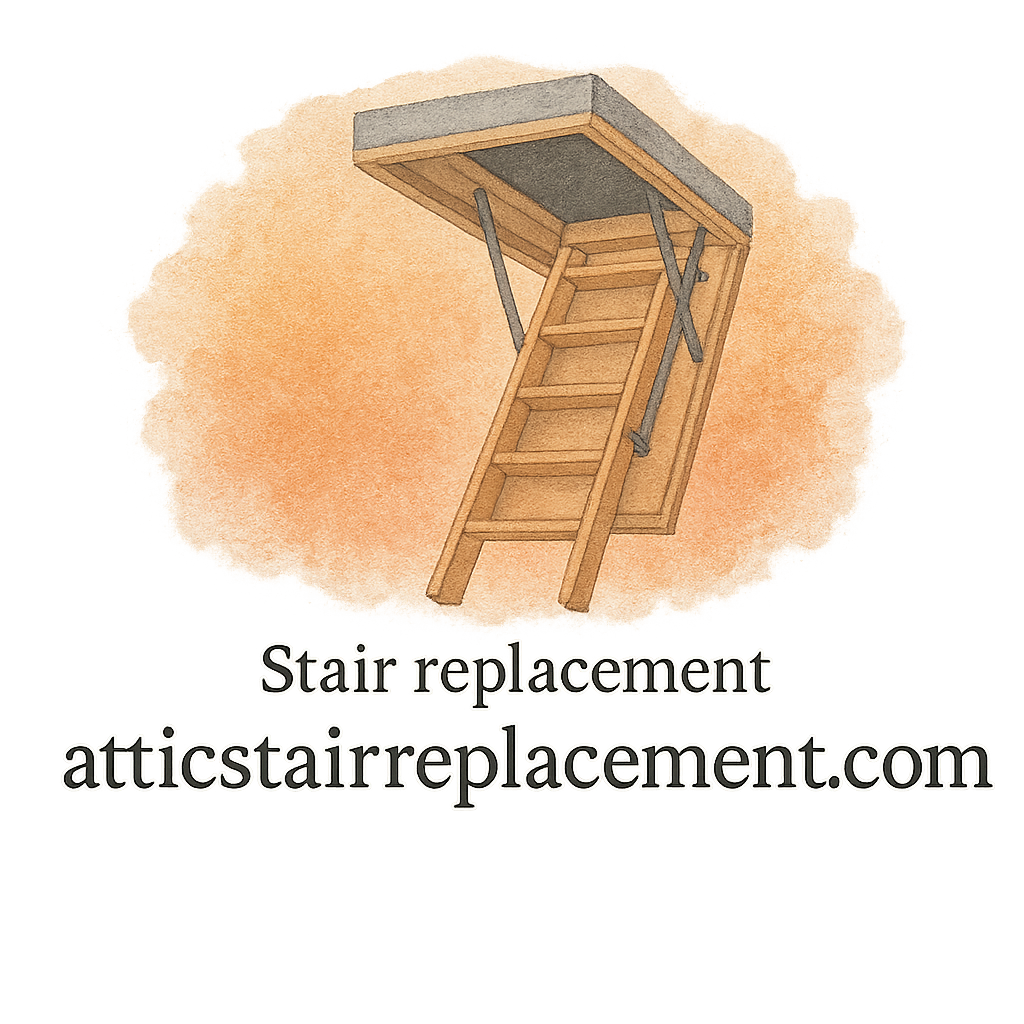Introduction: Why Eco-Friendly Attic Stairs Matter
Thinking about replacing your attic stairs? If you’re like most homeowners, you’re probably focused on functionality, safety, and cost. But here’s the thing—your choice of materials can make a huge difference for the planet. Eco-friendly attic stair replacement isn’t just a trend; it’s a practical way to reduce your environmental footprint while still upgrading your home.
In this guide, we’ll break down six eco-friendly materials that are perfect for attic stair replacement design. Whether you’re planning a DIY installation or hiring a contractor, you’ll find plenty of inspiration here.
The Growing Importance of Sustainable Home Improvement
Eco-conscious homeowners are realizing that every renovation choice matters. Even something as small as an attic stair replacement can impact your home’s sustainability.
Environmental benefits
By using reclaimed or renewable resources, you’re keeping waste out of landfills and reducing demand for new raw materials.
Energy efficiency and indoor air quality
Some eco-friendly materials naturally insulate your home, reducing heating and cooling costs. Others are free of toxic finishes, which improves the air you and your family breathe.
For more green living inspiration, check out our home improvement guides.
Factors to Consider Before Choosing Eco-Friendly Materials
Before jumping into the materials, think about these factors:
Durability and safety
Your attic stairs need to hold up over time. A “green” material isn’t helpful if it wears out quickly.
Cost-effectiveness
Budget is always a factor. While some eco-materials are pricier upfront, they often last longer and save money in maintenance.
Ease of installation
Some materials are DIY-friendly, while others may require professional help. If you’re unsure, browse our expert advice section.
1. Reclaimed Wood: A Classic Green Choice
Reclaimed wood is one of the most popular eco-friendly materials for attic stair replacement.
Advantages of reclaimed wood
- Reduces deforestation by reusing old wood
- Offers unique character with natural patina
- Strong and long-lasting if properly maintained
How to maintain reclaimed wood attic stairs
Regular cleaning and sealing will help prevent rot and warping. More on this in our maintenance and repair guide.
2. Bamboo: A Fast-Growing, Strong Alternative
Bamboo has exploded in popularity as a building material—and for good reason.
Why bamboo is eco-friendly
- Grows much faster than hardwoods (some species grow 3 feet per day!)
- Regenerates without replanting
- Naturally strong and flexible
Bamboo stair aesthetics and design
Bamboo gives a sleek, modern look. Its light color brightens attic spaces, making them feel larger.
3. Recycled Metal: Modern and Sustainable
If you want a modern, industrial look, recycled metal is your friend.
Strength and durability of recycled steel/aluminum
These materials are virtually indestructible and can hold heavy loads, making them ideal for heavy-duty attic stairs.
Best design applications for recycled metal
Perfect for hybrid designs where wood frames are paired with metal rungs or hinges. Explore more in our product reviews.

4. Cork: Lightweight and Renewable
Cork isn’t just for wine bottles—it’s a fantastic eco-material for stair projects.
Cork’s natural insulation benefits
It absorbs sound and heat, keeping your attic quieter and more energy efficient.
Style options for cork attic stair panels
Cork panels can be combined with wood or bamboo frames, offering both strength and a unique design.
5. FSC-Certified Plywood: Responsible Sourcing
Not all plywood is created equal. Look for FSC certification when buying new sheets.
What FSC certification means
The Forest Stewardship Council ensures wood comes from responsibly managed forests.
Long-lasting attic stair construction with plywood
FSC plywood is durable, affordable, and available in a wide range of finishes.
6. Composite Materials from Recycled Plastics
Composite boards made from recycled plastics are another great option.
Reducing waste with recycled plastic
They transform discarded plastic into useful, long-lasting building materials—helping prevent landfill buildup.
Modern design appeal of composites
Composites can mimic wood grain or smooth finishes, giving you flexible design choices.
Comparing the Eco-Friendly Materials
How do these materials stack up against one another?
Cost comparison
- Reclaimed wood: Mid-range
- Bamboo: Affordable
- Recycled metal: Higher upfront cost
- Cork: Moderate
- FSC plywood: Budget-friendly
- Recycled composites: Varies
Longevity and maintenance
Metal and composites often last the longest, while cork and bamboo may need extra care.
Which one is best for your attic stair replacement?
It depends on your style, budget, and installation skills. For DIYers, bamboo or FSC plywood is easiest. For high-traffic homes, metal or composites win.
DIY vs. Hiring a Contractor for Eco-Friendly Stairs
Should you tackle the project yourself or bring in a pro?
Benefits of DIY installation
- Lower costs
- Greater control over design
- A rewarding home project experience
When to hire an expert contractor
If your attic requires structural changes or heavy-duty installations, call a contractor for safety and job quality.
Common Mistakes to Avoid with Sustainable Stair Projects
- Skipping proper sealing on wood and bamboo
- Ignoring weight capacity limits
- Overlooking hidden costs (like hardware and insulation)
Learn more about common mistakes in attic stair projects.
Tips for Maintaining Eco-Friendly Attic Stairs
Cleaning methods
Use natural, non-toxic cleaners to avoid damaging eco-materials.
Preventing long-term damage
Check hinges regularly, reseal wood, and avoid excess moisture exposure.
See our care and prevent guides for more.
Budgeting for Eco-Friendly Attic Stair Replacement
Hidden costs to watch for
Hardware, fasteners, and finishes can quickly add up.
Smart budget-friendly choices
Mix reclaimed wood with FSC plywood or composites for both durability and affordability.
Check our budget tips for saving money on eco-stair projects.
Final Thoughts: Building a Greener Home One Step at a Time
Eco-friendly attic stair replacement isn’t just about stairs—it’s about creating a healthier, more sustainable home. By choosing reclaimed, renewable, or recycled materials, you’re making a long-term investment in both your house and the planet.
For more in-depth guides, tutorials, and expert insights, visit Attic Stair Replacement.
FAQs
1. What is the most durable eco-friendly material for attic stairs?
Recycled metal and composite materials tend to last the longest with minimal maintenance.
2. Can I install bamboo attic stairs on my own?
Yes, bamboo is relatively DIY-friendly, especially if you follow step-by-step DIY installation guides.
3. Are eco-friendly materials more expensive than traditional ones?
Some are, but many (like FSC plywood or bamboo) are budget-friendly options that save money long-term.
4. How do I maintain reclaimed wood attic stairs?
Keep them sealed, avoid moisture, and follow our maintenance recommendations.
5. Is cork strong enough for attic stair use?
Yes, when combined with wood or bamboo framing, cork provides strength plus insulation benefits.
6. What are hidden costs in eco-friendly attic stair projects?
Finishes, hardware, and installation labor are the most common hidden costs.
7. Where can I find expert advice on eco-friendly attic stair replacement?
Check out our dedicated expert advice section for pro tips and guidance.


